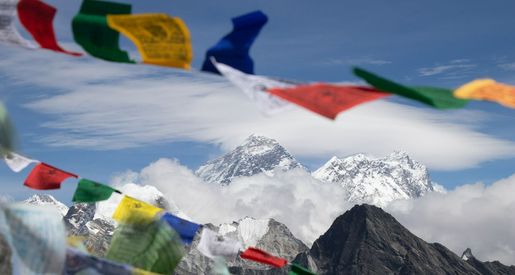- Details
- Category: Knowledge Centre
What Insurance do you need for an Everest Base Camp trek?
When it comes to adventure travel and treks like Everest Base Camp or other challenges like Kilimanjaro there are always going to be certain risks.
Whether they’re due to sickness, injury or weather delays it’s important that you have the right insurance so you are adequately prepared for them.
Therefore, when you book an adventure with EverTrek it is a requirement for you to have an adequate insurance policy in place for the duration of your trip.
When it comes to insurance we believe that it should be considered amongst the more important parts to tick off your list. Like any item that you purchase, let’s use your hiking boots as an example. If you buy a pair on a budget or get an inadequate pair they won’t hold up when you need them most. Food for thought.
Here are some things to consider when looking at high altitude trekking insurance:
The High Altitude
Trekking to Everest Base Camp even via the classic route, involves you reaching what would be considered extreme altitude. At the highest point on the trek, Kala Patthar, you will reach an altitude of 5550 meters above sea level. Due to the remoteness of this region that you're trekking through, your trekking insurance policy should always include helicopter evacuation just in case you get into difficulty.
Most insurance policies around don’t cover you for anything like this altitude due to the risks of altitude sickness or Acute Mountain Sickness (AMS). Although our trips are designed to avoid AMS, we can’t ignore it, and if it happens there are only three cures:
Descend, Descend, Descend. Alternatively, it's time to join the chopper club and get down.
As a result, it’s important you make sure that your trekking insurance company is aware that you are trekking in Nepal and you have helicopter evacuation insurance to the maximum altitude of your trip.
Note - If you're on Island Peak, Mera Peak or any trek that goes higher than Everest Base Camp then you will need insurance up to the highest point of your trip. An example would be for the Ultimate Island Peak trip is that you need insurance up to 6189m.
Accidents on the trek
Let’s face it, walking, for the most part, is relatively easy. We are so used to it that it comes as naturally as breathing but slips, trips, and falls are a very serious problem that we need to be aware of on any trek or expedition.
This can happen to anyone, even me as shown below whilst hiking the Brecon Beacons a year so so back.
When you also add in the altitude factor, walking (and breathing for that matter) becomes a little trickier.
Everest Base Camp is at least an 11 day trek depending on which route you take. When you have been walking for that length of time at high altitude, us humans get fatigued and a little bit clumsy at times. A twisted ankle or a blown knee joint can be a serious trip ending injury and if this happens, again it may be time to, as Arnold Schwarzenegger would say. “Get to the Choppa”
Delhi Belly or the Nepalese Napalm
I’m sure you’ve heard of Traveller's diarrhea before. Just about anyone that has traveled outside of the UK, especially around Asia has experienced “Delhi belly” or the dreaded "Nepalese Napalm" as it’s known locally in Nepal. No matter what funny name you might know traveler’s diarrhea by, getting it most definitely is NOT fun.
We have seen it happen many times. Otherwise fit and healthy people have treated themselves to an extra couple of days in Kathmandu before their trek even starts, and what happens? All hell breaks loose!
This can result in an aborted trek and at worst a brief excursion to one of Kathmandu’s finest hospitals for some TLC. To avoid a nasty bill make sure your insurance covers you for sickness, medication, hospital stays and return travel back home if you need it.
Weather delays and other acts of god
If you think the weather in the UK can be unpredictable you should see what it’s like in the Himalayas! This is especially so around the monsoon season where long weather delays can happen. You could get stuck in Kathmandu waiting for a flight out or even worse, stuck at the other end in Lukla.
If this happens then, unfortunately, you join the dreaded waiting game. We do what we can to help and often move heaven and earth for our EverTrekkers but not even we can control the weather. (Here's an article with what happens when there are weather delays)
If you run out of time this can mean changes to your trip or worst-case scenario, an aborted trip. If this happens you will need your insurance policy to cover the cost of the cancelled trip and any re-booking of flights etc.
Lost Luggage
Sometimes, unbeknown to you, your suitcase will go on a little unscheduled adventure, as fun as this is for your bag it’s a nightmare for you.
Nobody wants to be stuck at the baggage claim overcome with waves of anxiety followed by the sinking reality that your bag has vanished. It’s a real pain in the proverbial having to find it, catch it and get it back when you're off to the Himalayas in less than 48 hours. Once again it’s time to ring that magic number and start the claim for lost, stolen or damaged luggage so make sure the policy covers the total value of your gear and you have specified any expensive special items.
Insurance company recommendations
When it comes to choosing your trekking insurance provider there are plenty of companies out there but look for a specialist instead of just a general insurance provider as it's likely they won't cover specific things at high altitude. Our first recommendation is to do your research and think of the worst-case scenario then seek cover for it, don’t just go with the cheapest option.
Some companies we have used personally on several occasions and known to be reliable in our experience are:
True Traveler Insurance
Visit the Everest Base Camp True Traveller page here
So which one should you use
Always remember, the choice of which insurance provider you will use is ultimately your responsibility. We can help and offer advice but cannot accept responsibility for an unsuitable policy even if it’s one of the above companies. Any insurance policy is unique to you and ultimately you have to ensure it meets all your needs.
We don’t write any of this to concern you as it’s very unlikely that you will ever need to use your insurance on the trek or trip with us. It’s a great peace of mind knowing you can just enjoy your trip in the knowledge that if something did happen, you have it covered.
All done? Peace of mind gained?
Awesome! Now let’s go trekking!
Previous Articles
- How to Train for the Everest Base Camp Trek
- How high is Everest Base Camp?
- How much spending money do you need for the Everest Base Camp trek
- What's the accommodation like on an Everest Base Camp trek
- Are showers available on the Everest Base Camp trek?
- What type of toilets are available on an Everest Base Camp Trek






